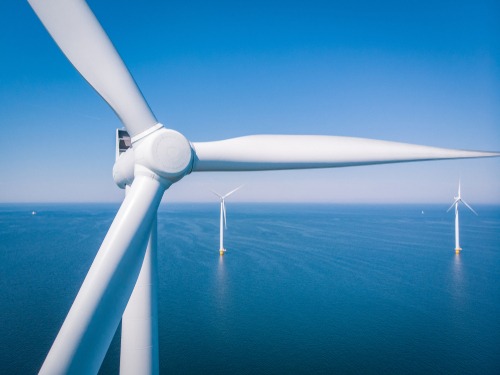Duke Energy Renewables Wind wins rights to Carolina Long Bay lease area

Following an offshore wind auction for a lease area in the Carolina Long Bay, Duke Energy Renewables Wind, LLC was this week named the winner by the Bureau of Ocean Energy Management (BOEM), granting it access to the foundations of up to 1.6 GW of potential wind energy over the next decade.
“Securing this lease creates optionality for future offshore wind if the North Carolina Utilities Commission determines it’s part of the least cost path to achieve 70 percent carbon reduction by 2030 and net-zero by 2050,” Stephen De May, Duke Energy’s North Carolina president, said. “As we continue to assess the area and project potential, we look forward to listening and learning from diverse stakeholders and community members in the region to ensure we are being thoughtful about all aspects of the potential project.”
It was one of two energy leases awarded as a result of the auction, with the other granted to TotalEnergies Renewables USA. Together, their bids reached approximately $315 million. Both remain subject to regulatory approval.
“With three separate wind projects now in the area, and potentially more on the way, the Carolinas are positioned to be the next American offshore wind hub,” Erik Milito, National Ocean Industries Association president, said. “Today’s winning bids were each more than seventeen times larger than the winning bid from the Kitty Hawk offshore wind lease sale just five years ago. We’re seeing the maturation of the market and an optimistic outlook for offshore wind in areas beyond our Northeastern states. A stronger supply chain, with new jobs and investments, will stretch through the Carolinas and communities throughout our nation.”
On Duke’s end, a proposed carbon plan is expected to be filed with the North Carolina Utilities Commission later this week. This will include multiple scenarios — all of which are potential options to reach the company’s final plan to reduce carbon emissions on its system. Site assessment and characterization activities could follow in 2023, with a potential in-service date slated between 2030 and 2032.
A Site Assessment Plan will also be submitted to BOEM for approval over the next year, including a proposal for studying the project area, wind energy, and its potential impacts. Development should continue over the next decade, with construction beginning once federal and state regulatory approvals are obtained and BOEM approves its Construction and Operations Plan.
Even in the face of these advancements, though, some have warned of potential issues if a 10-year moratorium on additional offshore wind leasing in the region goes into effect as planned on July 1, 2022. This moratorium resulted from actions undertaken by the Trump administration in 2020, which opponents argue could imperil the Biden administration’s attempts to deploy 30 GW of offshore wind by 2030. In a bicameral letter also released this week, U.S. Sen. Kirsten Gillibrand (D-NY) and U.S. Rep. Deborah Ross (D-NC) called for the repeal of that moratorium through language included in the America COMPETES Act.
“Overturning this arbitrary ban is critical to the production of clean energy here in the United States, creating high-quality jobs, and improving America’s competitiveness on the global scale,” Gillibrand and Ross wrote to Congressional leadership. “Accordingly, we urge you to ensure that this provision remains in the legislation.”
